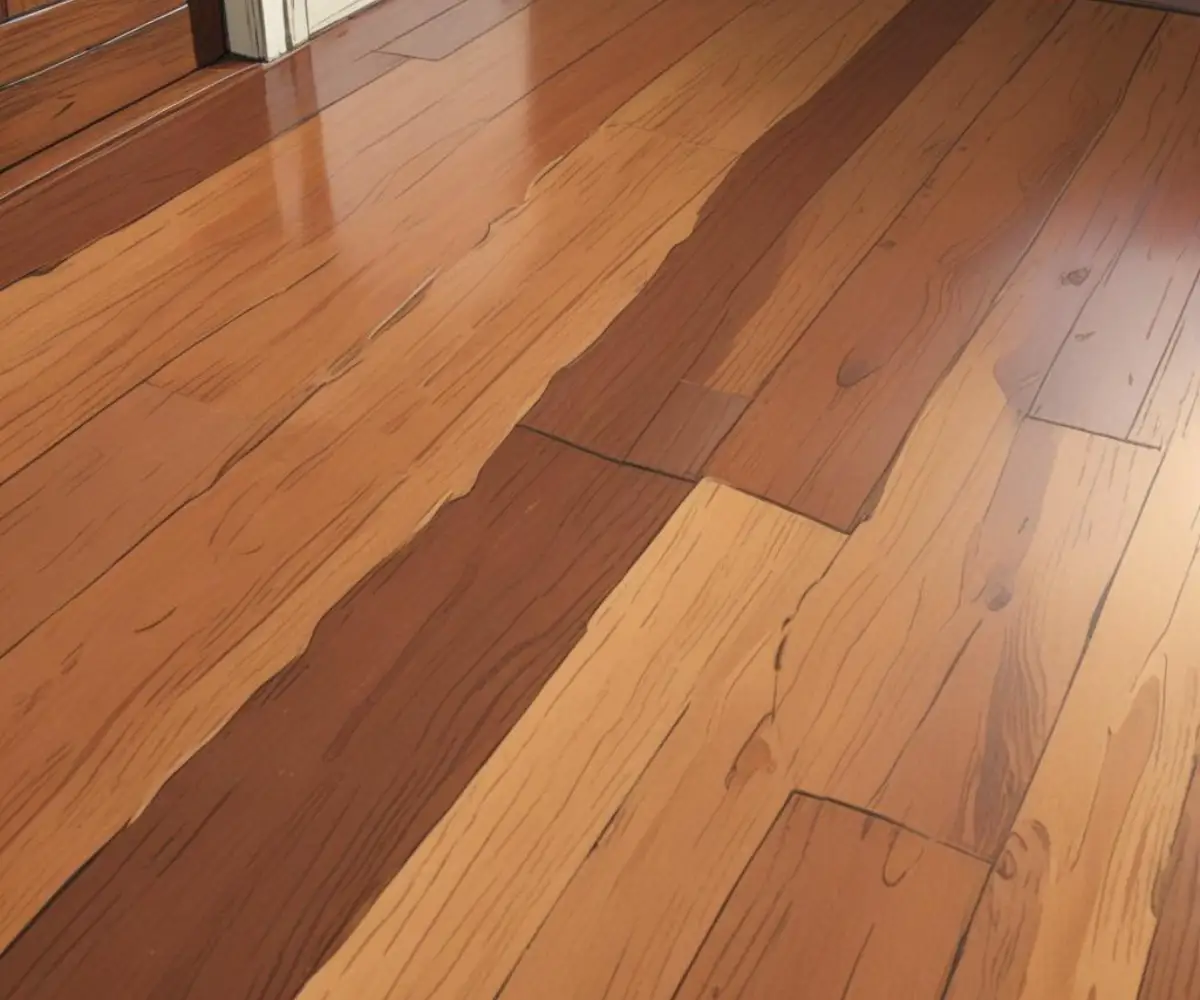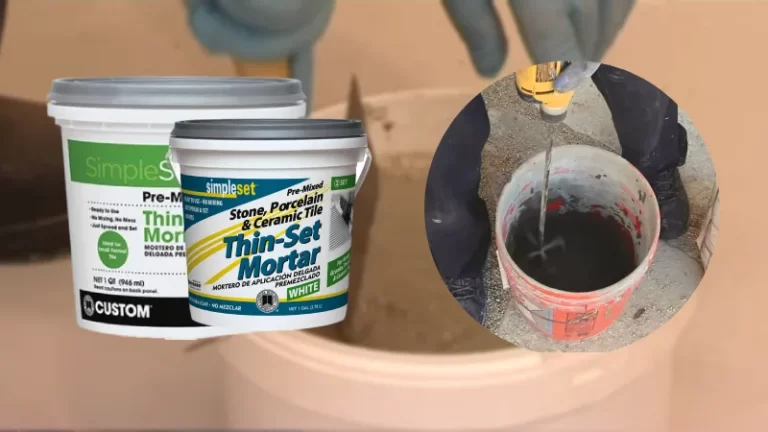Can You Use Restor-A-Finish On Wood Floors? The Truth
Your hardwood floors have seen better days. Scuffs from moving furniture, scratches from pets, and a general dullness from years of foot traffic have left them looking tired and worn. You’re longing for that original warmth and luster, but the thought of a full-scale sanding and refinishing project—with all the dust, cost, and disruption—is overwhelming.
It’s a common dilemma for homeowners. You search for an easier solution and stumble upon a product that seems almost too good to be true: Howard Restor-A-Finish. Promising to restore the finish in a simple wipe-on, wipe-off process, it sounds like the perfect answer to your flooring woes. But can you really use a product primarily designed for furniture to fix an entire wood floor?
This is where the hesitation kicks in. The internet is filled with conflicting advice, leaving you to wonder if this “miracle” product is a brilliant shortcut or a disastrous mistake waiting to happen. This article will cut through the confusion and provide a definitive guide on whether using Restor-A-Finish on your wood floors is a wise decision.
You'll Learn About
What is Restor-A-Finish and How Does It Work?
Before we can decide if it’s suitable for floors, it’s crucial to understand what Restor-A-Finish actually is. It is not a new topcoat or a varnish. It’s a unique, solvent-based formula designed to penetrate the existing finish on wood surfaces. It contains a small amount of stain and restorative oils that work to blend out minor scratches, blemishes, and abrasions.
The product’s primary purpose is to revive old, faded finishes like lacquer, shellac, and varnish without stripping them. Think of it less as a refinishing product and more as a cosmetic touch-up. It’s incredibly popular in the antique world for bringing life back to furniture while preserving its original character and patina.
The key takeaway here is that Restor-A-Finish works *with* the existing finish; it doesn’t create a new, durable protective layer on top of the wood. This distinction is the root of the debate over its use on high-traffic surfaces like floors.
The Big Question: Is It Safe for Wood Floors?
Let’s get straight to the point. The manufacturer, Howard Products, explicitly states that Restor-A-Finish is not recommended for floors. The primary reason is that it’s not designed to be a durable, walkable surface. It does not cure and harden in the same way that a true floor finish, like polyurethane, does.
Using it on a floor can lead to a host of problems. The surface can remain oily or sticky, attracting dirt and leaving footprints. More importantly, it doesn’t provide the long-term protection against abrasion, spills, and foot traffic that a floor desperately needs. It’s a temporary cosmetic fix, not a lasting solution.
Furthermore, if you later decide to properly refinish your floors, the oils in Restor-A-Finish can penetrate into the wood, potentially causing issues with the adhesion of the new polyurethane topcoat. This could turn a standard refinishing job into a much more complicated and expensive ordeal.

When Might You Consider It (With Extreme Caution)?
Despite the manufacturer’s warning, some people do use Restor-A-Finish on their floors for very specific, limited applications. This is generally done with the understanding that it is a short-term fix and carries significant risks. If you’re considering this path, it should only be for minor, localized touch-ups on older, waxed floors, not modern polyurethane finishes.
For instance, you might use it to quickly hide a few light scratches in a low-traffic area before staging a home for sale. However, this is a risky strategy. It’s crucial to test the product in a very inconspicuous spot first, like inside a closet, to see how it reacts with your specific floor finish.
Never apply it over a modern polyurethane or polyacrylic finish. These are essentially plastic coatings, and the solvents in Restor-A-Finish won’t be able to penetrate them effectively, resulting in a sticky, uneven mess. If a drop of water beads up on your floor, you likely have a modern finish that is incompatible with this product.
The Proper Way to Restore Your Wood Floors
If your floors are showing signs of wear, the best approach is to use methods specifically designed for flooring. The right method depends on the severity of the damage. For many homeowners, a full sanding is not the only option.
A less invasive and more affordable choice is a “screen and recoat.” This process involves lightly abrading the top layer of the existing polyurethane finish with a buffer (or “screen”) and then applying a fresh coat of compatible finish. This revitalizes the floor’s protection and shine without sanding down to the bare wood. A screen and recoat is perfect for floors with light surface scratches and dullness but without deep gouges or areas where the finish has completely worn away.
If the damage is severe, with deep scratches, stains, or areas of bare wood, then a full refinishing is the most effective solution. While it’s a bigger project, it restores the floor to a like-new condition and offers the chance to change the stain color if you wish. Deciding on a full replacement is a big step, and understanding the best time to buy flooring at Lowes can help manage the budget for such a project.
Step-by-Step Guide to a Safe Floor Revitalization
1. Deep Cleaning and Prep
Before any restoration attempt, you must thoroughly clean your floors. Use a cleaner specifically designed for hardwood floors to remove all dirt, grime, and residues from previous cleaning products. This is a critical step for ensuring any new product will adhere properly.
2. Assessing the Damage
Carefully inspect your floors. Are the scratches just in the topcoat, or have they penetrated to the wood itself? Are there areas where the finish is completely gone? This assessment will determine whether you need a simple revitalizer, a screen and recoat, or a full sanding.
3. Choosing the Right Product
For floors that are just dull, a hardwood floor revitalizer or polish can work wonders. These are typically water-based polyurethane formulas that fill in microscopic scratches and add a new layer of shine and protection. They are specifically designed for floors and are a much safer alternative to Restor-A-Finish.
| Floor Restoration Method | Best For | Cost | Effort Level |
|---|---|---|---|
| Floor Revitalizer/Polish | Dull finish, very light surface scuffs | $ | Low (DIY) |
| Screen and Recoat | Light to moderate surface scratches, intact finish | $$ | Medium (DIY possible, professional recommended) |
| Full Refinishing (Sanding) | Deep scratches, stains, worn-through finish | $$$ | High (Professional highly recommended) |
| Restor-A-Finish (Spot Treatment) | Not Recommended for Floors; very minor cosmetic touch-ups on old, non-polyurethane finishes only | $ | High Risk |
Exploring Safer Alternatives for Your Floors
Instead of reaching for Restor-A-Finish, consider these floor-specific products that are designed to solve the same problems without the associated risks. Products like Minwax Hardwood Floor Reviver or Rejuvenate Professional Wood Floor Restorer are formulated to bond with your existing polyurethane finish, providing a durable and lasting shine.
These revitalizers are applied with a microfiber mop and dry to a hard, clear finish. They offer a much safer and more effective way to bring back the luster to your tired floors. For new installations, flooring choices have also evolved. Considering options like Lifeproof vinyl flooring might be a great long-term solution, and it’s useful to know if can i put lifeproof vinyl flooring under cabinets when planning a larger remodel.
Maintaining the right environment is also key to floor longevity. Drastic changes in temperature and humidity can cause wood to expand and contract. While not directly related to refinishing, understanding home systems, even something as simple as knowing how to turn off wifi on honeywell thermostat, is part of a holistic approach to home maintenance that protects your investment.
The Final Verdict
So, can you use Restor-A-Finish on wood floors? The answer is a firm no. While it’s a fantastic product for its intended purpose—restoring furniture—it is not formulated for the unique demands of a floor. The risks of a sticky, dirt-attracting surface that offers no real protection are too high.
Furthermore, using it can complicate future refinishing efforts, potentially costing you more time and money in the long run. The temptation of a quick fix is understandable, but your hardwood floors are a valuable asset in your home. They deserve a proper, safe, and effective treatment designed for their specific needs.
Instead of taking a risky shortcut, opt for a floor-specific revitalizer for a quick shine or invest in a professional screen and recoat for a more substantial restoration. Your floors will not only look better, but they will also be properly protected for years to come.

